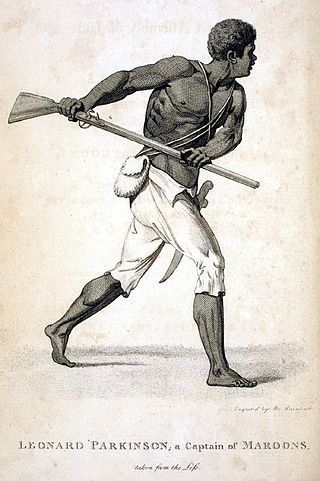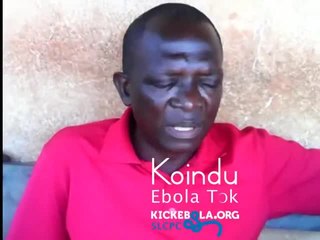Related Research Articles

The Underground Railroad was used by freedom seekers from slavery in the United States and was generally an organized network of secret routes and safe houses. Enslaved Africans and African Americans escaped from slavery as early as the 16th century and many of their escapes were unaided, but the network of safe houses operated by agents generally known as the Underground Railroad began to organize in the 1780s among Abolitionist Societies in the North. It ran north and grew steadily until the Emancipation Proclamation was signed in 1863 by President Abraham Lincoln. The escapees sought primarily to escape into free states, and from there to Canada.

In the context of the history of slavery in the Americas, free people of color were primarily people of mixed African, European, and Native American descent who were not enslaved. However, the term also applied to people born free who were primarily of black African descent with little mixture. They were a distinct group of free people of color in the French colonies, including Louisiana and in settlements on Caribbean islands, such as Saint-Domingue (Haiti), St. Lucia, Dominica, Guadeloupe, and Martinique. In these territories and major cities, particularly New Orleans, and those cities held by the Spanish, a substantial third class of primarily mixed-race, free people developed. These colonial societies classified mixed-race people in a variety of ways, generally related to visible features and to the proportion of African ancestry. Racial classifications were numerous in Latin America.

A quilombo ; from the Kimbundu word kilombo, lit. 'war camp') is a Brazilian hinterland settlement founded by people of African origin, and others sometimes called Carabali. Most of the inhabitants of quilombos, called quilombolas, were maroons, a term for escaped slaves.

Maroons are descendants of Africans in the Americas and Islands of the Indian Ocean who escaped from slavery, through flight or manumission, and formed their own settlements. They often mixed with Indigenous peoples, eventually evolving into separate creole cultures such as the Garifuna and the Mascogos.

Queen Nanny, Granny Nanny, or Nanny of the Maroons ONH, was an early-18th-century freedom fighter and leader of the Jamaican Maroons. She led a community of formerly-enslaved escapees, the majority of them West African in descent, called the Windward Maroons, along with their children and families. At the beginning of the 18th century, under the leadership of Nanny, the Windward Maroons fought a guerrilla war lasting many years against British authorities in the Colony of Jamaica, in what became known as the First Maroon War.

The Sierra Leonean Creole or Krio is an English-based creole language that is the lingua franca and de facto national language spoken throughout the West African nation of Sierra Leone. Krio is spoken by 96 percent of the country's population, and it unites the different ethnic groups in the country, especially in their trade and social interaction with each other. Krio is the primary language of communication among Sierra Leoneans at home and abroad, and has also heavily influenced Sierra Leonean English. The language is native to the Sierra Leone Creole people, or Krios, a community of about 104,311 descendants of freed slaves from the West Indies, Canada, United States and the British Empire, and is spoken as a second language by millions of other Sierra Leoneans belonging to the country's indigenous tribes. Krio, along with English, is the official language of Sierra Leone.
An English-based creole language is a creole language for which English was the lexifier, meaning that at the time of its formation the vocabulary of English served as the basis for the majority of the creole's lexicon. Most English creoles were formed in British colonies, following the great expansion of British naval military power and trade in the 17th, 18th and 19th centuries. The main categories of English-based creoles are Atlantic and Pacific.

The Second Maroon War of 1795–1796 was an eight-month conflict between the Maroons of Cudjoe's Town, a Maroon settlement later renamed after Governor Edward Trelawny at the end of First Maroon War, located near Trelawny Parish, Jamaica in the St James Parish, and the British colonials who controlled the island. The Windward communities of Jamaican Maroons remained neutral during this rebellion and their treaty with the British still remains in force. Accompong Town, however, sided with the colonial militias, and fought against Trelawny Town.

Atlantic Creole is a cultural identifier of those with origins in the transatlantic settlement of the Americas via Europe and Africa.
Jamaican Maroons descend from Africans who freed themselves from slavery in the Colony of Jamaica and established communities of free black people in the island's mountainous interior, primarily in the eastern parishes. Africans who were enslaved during Spanish rule over Jamaica (1493–1655) may have been the first to develop such refugee communities.
Moore Town is a Maroon settlement located in the Blue Mountains and John Crow Mountains of Portland, Jamaica, accessible by road from Port Antonio. The easternmost Maroon town, Moore Town is located in the eastern end of the parish. Formerly known as New Nanny Town, Moore Town was founded in 1740 when the Peace Treaty was signed between the British colonial authorities and the Windward Maroons. This treaty allotted the Moore Town Maroons 1000 acres, but Moore Town only received 500. In 1781 the initial 500 acres was augmented with another 500 acres, taking their communal land up to 1,000 acres.

The languages of the Caribbean reflect the region's diverse history and culture. There are six official languages spoken in the Caribbean:

Afro-Hondurans or Black Hondurans are Hondurans of Sub-Saharan African descent. Research by Henry Louis Gates and other sources regards their population to be around 1-2%. They descended from: enslaved Africans by the Spanish, as well as those who were enslaved from the West Indies and identify as Creole peoples, and the Garifuna who descend from exiled zambo Maroons from Saint Vincent. The Creole people were originally from Jamaica and other Caribbean islands, while the Garifuna people were originally from Saint Vincent and the Grenadines. Garifunas arrived in the late seventeen hundreds and the Creole peoples arrived during the eighteen hundreds. About 600,000 Hondurans are of Garífuna descent that are a mix of African and indigenous as of Afro Latin Americans. Honduras has one of the largest African community in Latin America.

The Crown Colony of Jamaica and Dependencies was a British colony from 1655, when it was captured by the English Protectorate from the Spanish Empire. Jamaica became a British colony from 1707 and a Crown colony in 1866. The Colony was primarily used for sugarcane production, and experienced many slave rebellions over the course of British rule. Jamaica was granted independence in 1962.
For a history of Afro-Caribbean people in the UK, see British African Caribbean community.

The Sierra Leone Creole people are an ethnic group of Sierra Leone. The Sierra Leone Creole people are descendants of freed African-American, Afro-Caribbean, and Liberated African slaves who settled in the Western Area of Sierra Leone between 1787 and about 1885. The colony was established by the British, supported by abolitionists, under the Sierra Leone Company as a place for freedmen. The settlers called their new settlement Freetown. Today, the Sierra Leone Creoles are 1.2 percent of the population of Sierra Leone.
The African-American diaspora refers to communities of people of African descent who previously lived in the United States. These people were mainly descended from formerly enslaved African persons in the United States or its preceding European colonies in North America that had been brought to America via the Atlantic slave trade and had suffered in slavery until the American Civil War. The African-American diaspora was primarily caused by the intense racism and views of being inferior to white people that African Americans have suffered through driving them to find new homes free from discrimination and racism. This would become common throughout the history of the African-American presence in the United States and continues to this day.
Three-Fingered Jack a.k.a. Jack Mansong, led a band of runaway slaves in the Colony of Jamaica in the eighteenth century.
Cuffee was an escaped slave in Jamaica who led other runaway slaves to form a community of free black people in Jamaica in the island's forested interior, and they raided white plantation owners at the end of the eighteenth century. The name Cuffee is a variation of the Twi Akan name Kofi, which is the name given to a boy born on a Friday.
Free black people in Jamaica fell into two categories. Some secured their freedom officially, and lived within the slave communities of the Colony of Jamaica. Others ran away from slavery, and formed independent communities in the forested mountains of the interior. This latter group included the Jamaican Maroons, and subsequent fugitives from the sugar and coffee plantations of coastal Jamaica.
References
- ↑ "The maroons of Jamaica | Black resistance against slavery | Against Slavery | Bristol and Transatlantic Slavery | PortCities Bristol". discoveringbristol.org.uk. Retrieved 2020-03-09.
- ↑ Rogozinski, Jan (1999). A Brief History of the Caribbean (Revised ed.). New York: Facts on File, Inc. pp. 155–68. ISBN 0-8160-3811-2.
- ↑ Price, Richard (1973). Maroon Societies: Rebel Slave Communities in the Americas. Garden City, NY: Anchor Press. p. 25. ISBN 0385065086. OCLC 805137.
- ↑ ADETOKUNBO (2015). Adetokunbo: Maroon Music (Album). USA: Adetokunbo.